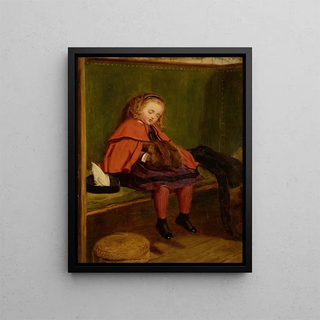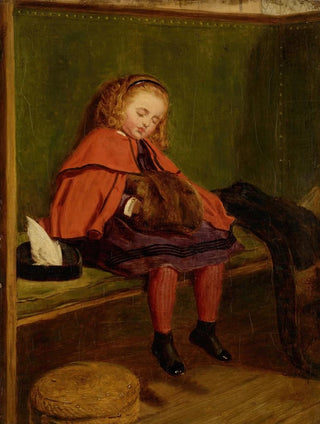Painting My Second Sermon - Frederic Leighton | Art print


View from behind

Frame (optional)
In the vast panorama of art history, certain works stand out for their ability to capture the very essence of humanity. "My Second Sermon," created by Frederic Leighton, is a striking example. This painting, which evokes themes as profound as spirituality and contemplation, invites the viewer to immerse themselves in a universe where time seems suspended. The scene depicts a moment of intense reflection, where the central figure, imbued with gravity, draws the eye and sparks a multitude of questions about the nature of existence and the role of art in the quest for meaning. The art print My Second Sermon - Frederic Leighton thus allows for a rediscovery of this iconic work, while offering a window into the thought and aesthetics of the 19th century.
Style and uniqueness of the work
Frederic Leighton's style is characterized by an exceptional mastery of colors and forms, which give his works an almost tactile dimension. In "My Second Sermon," the chosen palette evokes an atmosphere that is both solemn and contemplative. Shades of blue and gold blend harmoniously, creating a visual depth that attracts the eye and the mind. The composition, carefully orchestrated, highlights the central figure while incorporating architectural and natural elements that enrich the visual narrative. The posture of the figure, both majestic and vulnerable, reflects the duality of man in the face of his beliefs and doubts. Every detail, from the drapery of the clothing to facial expressions, is meticulously crafted, offering a richness of interpretation that continues to fascinate.
The artist and his influence
Frederic Leighton, an emblematic figure of the Pre-Raphaelite movement and Neoclassicism, mastered the art of blending tradition and innovation throughout his career. His work, marked by a constant pursuit of beauty and harmony, influenced many contemporary and later artists. Leighton, as president of the Royal Academy, played a decisive role in promoting British art on the international stage. His ability to address universal themes through refined aesthetics allowed his creations to transcend eras.

Matte finish

View from behind

Frame (optional)
In the vast panorama of art history, certain works stand out for their ability to capture the very essence of humanity. "My Second Sermon," created by Frederic Leighton, is a striking example. This painting, which evokes themes as profound as spirituality and contemplation, invites the viewer to immerse themselves in a universe where time seems suspended. The scene depicts a moment of intense reflection, where the central figure, imbued with gravity, draws the eye and sparks a multitude of questions about the nature of existence and the role of art in the quest for meaning. The art print My Second Sermon - Frederic Leighton thus allows for a rediscovery of this iconic work, while offering a window into the thought and aesthetics of the 19th century.
Style and uniqueness of the work
Frederic Leighton's style is characterized by an exceptional mastery of colors and forms, which give his works an almost tactile dimension. In "My Second Sermon," the chosen palette evokes an atmosphere that is both solemn and contemplative. Shades of blue and gold blend harmoniously, creating a visual depth that attracts the eye and the mind. The composition, carefully orchestrated, highlights the central figure while incorporating architectural and natural elements that enrich the visual narrative. The posture of the figure, both majestic and vulnerable, reflects the duality of man in the face of his beliefs and doubts. Every detail, from the drapery of the clothing to facial expressions, is meticulously crafted, offering a richness of interpretation that continues to fascinate.
The artist and his influence
Frederic Leighton, an emblematic figure of the Pre-Raphaelite movement and Neoclassicism, mastered the art of blending tradition and innovation throughout his career. His work, marked by a constant pursuit of beauty and harmony, influenced many contemporary and later artists. Leighton, as president of the Royal Academy, played a decisive role in promoting British art on the international stage. His ability to address universal themes through refined aesthetics allowed his creations to transcend eras.
12,34 €






